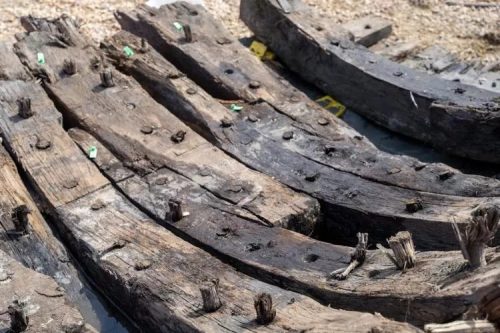
The world of archaeology is filled with captivating stories of lost treasures, ancient civilizations, and historical mysteries. In a surprising turn of events, a quarry in an unassuming corner of England has become the stage for an extraordinary discovery. Buried beneath layers of sediment and rock, archaeologists have unearthed a rare Elizabethan ship, shedding light on a pivotal era in maritime history. In this article, we’ll embark on a journey to explore this remarkable find, delving into the ship’s history, its significance, and the painstaking efforts to excavate and preserve this invaluable relic.
A Glimpse into Elizabethan England
To appreciate the significance of this discovery, it’s essential to delve into the Elizabethan era. The reign of Queen Elizabeth I (1558-1603) marked a crucial period in England’s history, characterized by exploration, trade, and naval expansion. The Elizabethan Age witnessed the rise of England as a formidable naval power, setting the stage for the British Empire’s future dominance.
Exploration and trade were vital components of Elizabethan England’s success. Ships played a central role in expanding England’s reach across the globe. The discovery of this Elizabethan vessel in a quarry holds the promise of unraveling a wealth of historical knowledge about this flourishing period of maritime exploration.
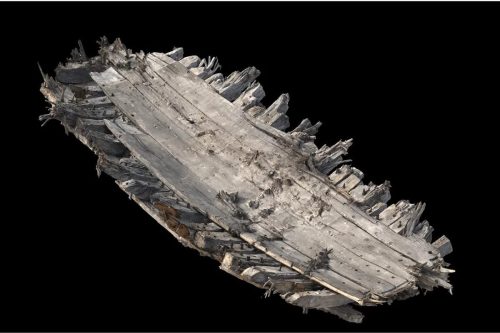
Uncovering the Elizabethan Ship
The story begins with the unassuming Forest of Dean, located in Gloucestershire, England. This picturesque region is renowned for its natural beauty, with its rich geological history having long attracted quarrying operations. However, one fateful day, quarry workers stumbled upon something far more valuable than limestone and rock—remnants of an ancient ship.
What makes this discovery truly extraordinary is the ship’s impeccable preservation. Remarkably, it’s not just a few timbers or fragments; the majority of the vessel has remained intact. As archaeologists and historians carefully excavate the ship, it’s clear that this find has the potential to be one of the most substantial and well-preserved Elizabethan ships ever discovered.
The Significance of the Discovery
The significance of this discovery extends beyond the thrill of uncovering a centuries-old ship. It opens a portal to the past, allowing us to peer into the world of Elizabethan England. Here are a few key aspects of its significance:
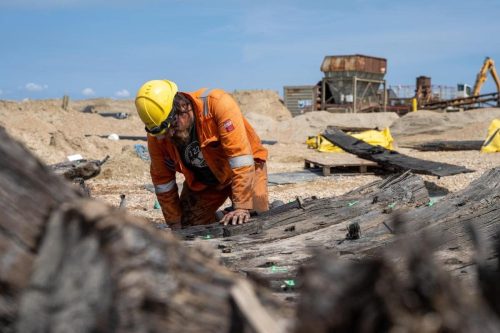
Maritime Technology: This ship provides crucial insights into the shipbuilding techniques of the Elizabethan era. Experts can study the vessel’s design, materials, and construction methods to gain a deeper understanding of the technological advancements of the time.
Exploration and Trade: The ship’s cargo and artifacts, if present, could reveal valuable information about trade routes, commodities, and global connections in the 16th century. This data can contribute to our understanding of the economic landscape of the period.
Cultural Heritage: The Elizabethan era has left an indelible mark on English culture and identity. This discovery can enhance our appreciation of this rich heritage, offering tangible connections to a bygone age.
Preservation Techniques: The excavation and preservation of this ship represent a monumental feat in the field of maritime archaeology. The methods employed in this process can serve as a model for future projects, ensuring that our historical treasures are protected and accessible for generations to come.
Excavation and Preservation Efforts
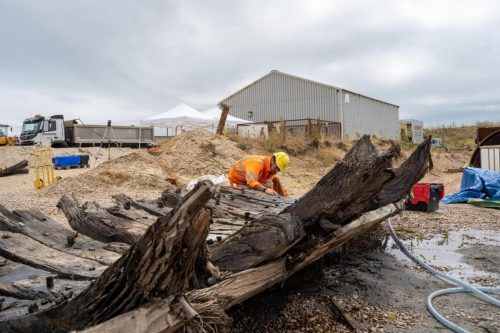
The delicate process of excavating the Elizabethan ship is a testament to the dedication and expertise of archaeologists and preservationists. To ensure the ship’s integrity, meticulous steps are being taken to protect it from damage and deterioration.
Controlled Excavation: Archaeologists are carefully removing the surrounding sediment to expose the ship’s structure. This process requires precision to prevent damage to the fragile timbers.
Documentation and Recording: Every detail of the ship is meticulously documented, from the arrangement of planks to the placement of artifacts. Advanced imaging techniques, such as laser scanning and photogrammetry, are employed to create detailed digital models.
Conservation: Once exposed, the ship’s timbers are treated to prevent decay and maintain structural integrity. Chemical processes and controlled environmental conditions are employed to protect the wood.
Research and Analysis: Experts are conducting in-depth research to understand the ship’s origin, history, and purpose. The cargo, if present, will be analyzed to gain insights into the vessel’s role in trade and exploration.
A Glimpse into the Future
As the excavation and preservation efforts continue, the world eagerly awaits the unveiling of the secrets hidden within this rare Elizabethan ship. The ship’s historical value transcends its wooden structure; it symbolizes an era of exploration, adventure, and the birth of the British Empire.
The find in the Forest of Dean quarry is a testament to the enduring allure of archaeology and the unquenchable human thirst for understanding our past. It reminds us that beneath the layers of time, there are stories waiting to be told, and discoveries waiting to be made.
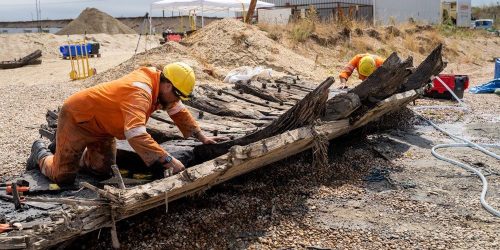
The discovery of a rare Elizabethan ship in a quarry is a testament to the capacity of archaeology to surprise, inspire, and educate. This remarkable find provides us with a unique opportunity to delve into the world of Queen Elizabeth I, explore the technological and cultural achievements of her era, and gain valuable insights into the maritime history of England. As we look forward to the results of ongoing research and the eventual public presentation of this invaluable piece of history, we celebrate the dedication of archaeologists, preservationists, and the enduring quest to unearth the past.






